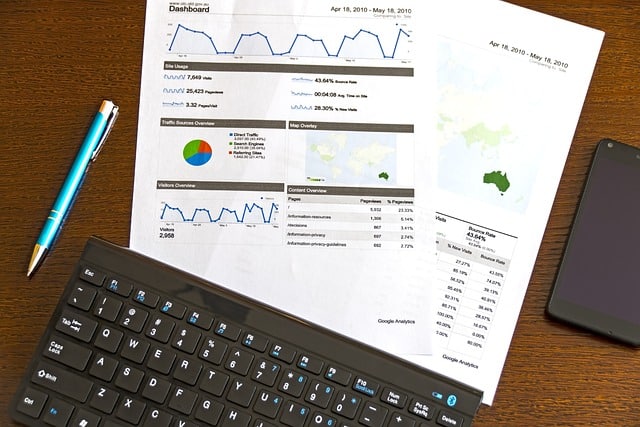Introduction
Assessing social media performance for social media success is crucial to engage with your audience, achieve your goals, and get a return on investment (ROI). In this outline, we will explore how to measure social media success and adjust your strategy to optimize your campaigns.
Importance of measuring social media success:
Measuring social media success is crucial for any business or organization that invests time and resources into social media marketing. Additionally, by regularly tracking and analysing metrics, you can evaluate the effectiveness of your campaigns, identify areas for improvement, and make data-driven decisions to optimize your social media strategy.
Measuring social media success enables you to:
- Determine ROI: By measuring the success of your social media campaigns, you can determine the return on investment of your efforts. This information is crucial for assessing the effectiveness of your strategy and making informed decisions about future investments.
- Track engagement: Measuring metrics such as likes, shares, comments, and click-through rates enables you to track the level of engagement your content is generating. This information is essential for identifying the types of content that resonate with your audience and optimizing your content strategy.
- Evaluate reach: Measuring metrics such as reach and impressions provides insight into the number of people who are seeing your content. Moreover, this information is crucial for assessing the effectiveness of your social media strategy and identifying opportunities to expand your reach.
Outline
To effectively measure the success of your social media campaigns, you should follow these steps:
- Identify Your Goals: Defining clear goals is essential for measuring social media success. This section will provide guidance on setting SMART goals that align with your overall marketing strategy.
- Choose the Right Metrics: Different social media metrics relate to different goals. This section will explore the most common metrics and how to select the right ones for your objectives.
- Track Your Metrics: Tracking metrics is essential for measuring social media success. This section will provide an overview of social media analytics tools and how to track metrics on different social media platforms.
- Analyse Your Results: Interpreting your metrics is crucial for identifying areas for improvement and making data-driven decisions. This section will provide guidance on how to analyse your results and identify opportunities for optimization.
- Adjust Your Strategy: Adjusting your strategy based on your analysis is essential for optimizing your social media campaigns. This section will provide guidance on how to use your analysis to make changes to your social media strategy.
Identify Your Goals
Having clear goals is crucial for any social media campaign. Goals provide direction, focus, and a way to measure success. In this section, we will explore the importance of setting clear goals for social media campaigns, provide examples of common social media goals, and provide guidance on how to set SMART goals that align with your overall marketing strategy.
Importance of Having Clear Goals
Setting clear goals is important for social media campaigns for several reasons. Firstly, goals provide direction and focus, helping to ensure that your efforts are aligned with your overall marketing strategy. Secondly, goals provide a way to measure success, enabling you to track progress, identify areas for improvement, and make data-driven decisions to optimize your campaigns. Finally, goals provide motivation, giving your team a clear target to aim for and a sense of achievement when they are reached.
Examples of Common Social Media Goals
The following are some common social media goals that businesses and organizations may have:
- Increase brand awareness: This goal aims to increase the number of people who are aware of your brand or product.
- Drive website traffic: This goal aims to increase the number of people visiting your website.
- Generate leads: This goal aims to generate new leads for your business or organization through social media channels.
- Improve engagement: This goal aims to increase the level of engagement your content generates on social media, such as likes, comments, and shares.
- Boost sales: This goal aims to increase the number of sales generated through social media channels.
How to Set SMART Goals for Your Social Media Campaigns
To effectively set goals for your social media campaigns, you should follow the SMART framework, which stands for Specific, Measurable, Achievable, Relevant, and Time-bound.
- Specific: Your goals should be clearly defined and specific. For example, instead of setting a goal to “increase brand awareness,” you could set a goal to “increase brand awareness by 20% among our target audience over the next three months.”
- Measurable: Your goals should be measurable, so you can track progress and determine success. For example, you could measure brand awareness by tracking the number of social media followers or mentions of your brand.
- Achievable: Your goals should be realistic and achievable with the resources and time available to you. For example, setting a goal to double your social media following in a month may not be achievable, but increasing it by 20% could be.
- Relevant Your goals should be relevant to your overall marketing strategy and business objectives. For example, if your overall goal is to increase sales, then your social media goals should align with that objective, such as driving more website traffic or generating leads.
- Time-bound: Your goals should have a clear timeframe for achievement, so you can track progress and adjust your strategy if needed. For example, you could set a goal to increase website traffic by 15% in the next six months.
- By following the SMART framework, you can ensure that your social media goals are clear, measurable, achievable, relevant, and time-bound, making it easier to track progress and adjust your strategy as needed.
Choose the Right Metrics
Assessing social media performance of your social media campaigns is essential to understand how well your efforts are paying off. However, choosing the right metrics to track depends on your specific goals. In this section, we will explore how different metrics relate to different goals, provide examples of common social media metrics, and offer guidance on how to choose the right metrics to measure your goals.
How Different Metrics Relate to Different Goals
Additionally, different metrics can provide insights into different aspects of your social media campaigns, and each one can relate to different goals. For example, if your goal is to increase brand awareness, you might track metrics such as impressions and reach, which measure how many people are exposed to your content. On the other hand, if your goal is to drive website traffic, you might track metrics such as click-through rate (CTR) and referral traffic, which measure how many people are clicking through to your website.
Examples of Common Social Media Metrics
The following are some common social media metrics that businesses and organizations may track:
- Impressions: The number of times your content is displayed on social media.
- Reach: The number of unique users who have seen your content on social media.
- Engagement: The level of interaction your content generates on social media, such as likes, comments, and shares.
- Click-through rate (CTR): The percentage of people who click on a link in your social media content.
- Referral traffic: The number of people who visit your website from social media.
- Conversions: The number of people who take a desired action, such as filling out a form or making a purchase, as a result of your social media campaigns.
How to Choose the Right Metrics for Your Goals
To choose the right metrics to measure your social media goals, consider the following steps:
- Identify your goals: Define your social media goals, such as increasing brand awareness, generating leads, or driving website traffic.
- Determine relevant metrics: Based on your goals, identify the metrics that are most relevant to measure your success. For example, if your goal is to increase brand awareness, you might track impressions and reach. If your goal is to generate leads, you might track click-through rates and conversions.
- Set benchmarks: Establish benchmarks for your metrics based on your past performance or industry standards. This will help you track progress towards your goals and make data-driven decisions to optimize your campaigns.
- Use a variety of metrics: Don’t rely on just one metric to measure the success of your campaigns. Use a variety of metrics to gain a comprehensive understanding of how your campaigns are performing.
- Monitor and adjust: Continuously monitor your metrics and adjust your strategy as needed. If a metric is not meeting your benchmark, consider adjusting your approach to improve performance.
By choosing the right metrics to measure your social media goals, you can gain valuable insights into the effectiveness of your campaigns, make data-driven decisions, and optimize your strategy for success.
Track Your Metrics
In today’s digital age, social media is a crucial part of any business’s marketing strategy. As businesses invest more time and money into social media, it becomes increasingly important to track and measure the effectiveness of their campaigns. This is where tracking metrics comes in. By tracking metrics, businesses can gain valuable insights into their audience’s behaviour, optimize their campaigns for success, and ultimately achieve their social media goals. In this article, we’ll explore why tracking metrics is important, provide an overview of social media analytics tools, and explain how to track your metrics using different social media platforms.
Why Tracking Metrics is Important
Tracking metrics is crucial for businesses that want to make data-driven decisions and optimize their social media campaigns for success. By tracking metrics, businesses can:
- Measure the effectiveness of their campaigns: Metrics provide businesses with a clear picture of how their campaigns are performing, and help them understand what is and isn’t working.
- Identify areas for improvement: Metrics can help businesses identify areas of their campaigns that need improvement, such as low engagement or high bounce rates.
- Make data-driven decisions: By using data to inform their decisions, businesses can make more informed choices about their social media strategy.
- Prove ROI: assessing your social media performance allows businesses to demonstrate the ROI of their social media campaigns to stakeholders, such as executives or investors.
Overview of Social Media Analytics Tools
There are a variety of social media analytics tools available to businesses, each with their own unique features and capabilities. Some of the most popular social media analytics tools include:
- Google Analytics: A free web analytics service offered by Google that tracks and reports website traffic.
- Hootsuite Insights: A social media analytics tool that provides businesses with real-time insights into their social media performance.
- Sprout Social: A social media management and analytics tool that offers a suite of features to help businesses manage and optimize their social media campaigns.
- Buffer Analyze: A social media analytics tool that provides businesses with insights into their social media performance, including engagement rates, follower growth, and click-through rates.
How to Track Your Metrics Using Different Social Media Platforms
Each social media platform has its own built-in analytics tools that businesses can use to track their metrics. Here’s an overview of how to track metrics on some of the most popular social media platforms:
- Facebook: Facebook provides businesses with a range of analytics tools, including Facebook Insights, which allows businesses to track engagement, reach, and other key metrics.
- Instagram: Instagram offers a range of analytics tools, including Insights, which provides businesses with metrics such as engagement rate, follower growth, and impressions.
- Twitter: Twitter Analytics allows businesses to track their audience’s engagement with their tweets, including retweets, likes, and replies.
- LinkedIn: LinkedIn Analytics provides businesses with insights into their page’s performance, including follower demographics, post engagement, and visitor analytics.
Social media analytics tools and tracking metrics on various platforms can offer valuable insights into audience behaviour, optimize campaigns, and achieve social media goals.
Analyse Your Results
Furthermore, interpreting your social media metrics is key to improving your social media performance. Additionally, by understanding the data, you can make informed decisions about your content and strategy. This piece will explain how to interpret your metrics, provide examples of what different metrics might indicate, and show you how to identify areas for improvement.
Understanding Your Metrics
Your social media metrics provide a wealth of information about your audience, your content, and your strategy. However, it can be difficult to know where to start. Here are some common metrics and what they can tell you:
- Engagement: Engagement measures how much your audience interacts with your content. This can include likes, comments, shares, and clicks. High engagement is a good sign that your content is resonating with your audience.
- Reach: Reach measures how many people have seen your content. It’s important to track reach to see if your content is being seen by your target audience.
- Impressions: Impressions measure how many times your content has been seen. This is different from reach because one person can see your content multiple times. Impressions can help you determine how many times you need to post your content to reach your desired audience.
- Click-Through Rate (CTR): CTR measures the number of clicks your content receives. This is important for driving traffic to your website and can help you understand which content is resonating with your audience.
Identifying Areas for Improvement
Once you have a good understanding of your metrics, it’s important to identify areas for improvement. Here are some common areas to focus on:
- Content: Look at your metrics to determine which types of content are performing well and which aren’t. Use this information to inform your content strategy.
- Timing: Experiment with posting at different times to see when your audience is most active. This can help you increase engagement and reach.
- Audience: Use your metrics to identify your audience demographics. This can help you tailor your content to their interests and preferences.
Adjust Your Strategy
Additionally, assessing your social media performance, campaigns, tracking metrics, and interpreting data are all critical components of your social media strategy. However, it is also essential to make necessary changes and optimize your approach to ensure continued success. In this piece, we will discuss the importance of adjusting your strategy, how to use your analysis to make changes to your social media campaigns, and tips for optimizing your social media strategy.
Why Adjusting Your Strategy Is Important
Social media is an ever-evolving landscape, and what works today may not be effective tomorrow. As such, it is essential to keep up with the latest trends and make necessary changes to your strategy. Moreover, adjusting your approach will help ensure that you continue to reach your target audience, meet your goals, and stay ahead of the competition.
How to Use Your Analysis to Make Changes to Your Social Media Campaigns
In addition, tracking and analysing social media metrics helps identify areas for improvement. If engagement rates decrease, try new content or adjust the posting schedule. Similarly, create more content related to a particular topic or trend if followers primarily engage with it.
Besides, to use your analysis effectively, start by identifying your key metrics and setting benchmarks for success. Regularly review your data, looking for trends or patterns that can inform your strategy. Furthermore, use this information to experiment with new approaches and monitor their impact on your metrics. Moreover, be willing to try new things and make adjustments as needed to ensure continued success.
Tips for Optimizing Your Social Media Strategy
While every social media strategy is unique, there are some general tips that can help you optimize your approach. Here are a few to consider:
- Know Your Audience: Understanding your target audience is critical to developing a successful social media strategy and creating content that resonates with them. Take the time to research your audience’s interests, demographics, and social media habits to ensure that you are delivering the right message to the right people.
- Experiment with Different Types of Content: Social media users are constantly inundated with content, so it’s essential to mix things up and experiment with different formats and styles. Try creating videos, infographics, or interactive content to see what resonates best with your audience.
- Use Paid Promotion: While organic reach is essential, using paid promotion can help you reach a broader audience and achieve your goals more quickly. Consider using paid social media advertising to promote your content, grow your following, or increase engagement.
- Collaborate with Others: Collaborating with other brands or influencers can help you reach new audiences and build valuable relationships. Look for opportunities to partner with others in your industry or niche to create mutually beneficial content or campaigns.
- Monitor Your Results: Regularly assessing your social media performance is essential to optimizing your strategy. Keep an eye on your analytics, and be willing to adjust your approach as needed to achieve your goals.
Conclusion
As we conclude, it’s crucial to remember that assessing social media performance is essential for any business or individual looking to leverage social media effectively. By tracking the right metrics, you can gauge the effectiveness of your campaigns, identify areas for improvement, and adjust your strategy accordingly. Here are some final tips and recommendations to help you measure your social media campaigns effectively.
Recap of the Importance of Measuring Social Media Success
To recap, measuring your social media success is vital for several reasons. It enables you to:
- Determine the effectiveness of your social media campaigns
- Identify which tactics are working and which ones aren’t
- Track your progress towards your social media goals
- Optimize your strategy to improve your social media performance
- Justify your social media investment to stakeholders and management
As a result, without assessing social media performance, you risk wasting valuable time, money, and resources on ineffective campaigns.
Final Tips and Recommendations for Measuring Your Social Media Campaigns
Here are some final tips and recommendations for measuring your social media campaigns:
- Keep your goals in mind: Remember to set specific, measurable, achievable, relevant, and time-bound (SMART) goals for your social media campaigns. Then, choose metrics that align with your goals.
- Use the right tools: There are various social media analytics tools available that can help you track your metrics effectively. Hence, choose the tools that suit your needs and budget.
- Monitor your metrics regularly: Track your metrics consistently and regularly to identify trends and patterns in your data. This will help you make informed decisions about your social media strategy.
- Analyse your data: In addition, interpret your metrics to gain insights into what’s working and what’s not. Use this information to adjust your social media strategy accordingly.
- Test and iterate: Continuously test and iterate your social media strategy to improve your performance. Experiment with different tactics, and analyse the results to see what works best for your audience.
By following these tips and recommendations, you can measure your social media success effectively. Additionally, you can optimize your strategy for better results. Remember, assessing your social media performance is an ongoing process that requires consistent effort and attention. In conclusion, with the right tools and approach, you can harness the power of social media to achieve your goals and grow your business.
ind out more about what’s happening within the digital marketing in our blog column.















